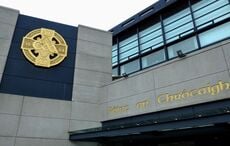During the now long gone era of the Celtic Tiger in Ireland, New York was more than attractive to foreign buyers in the real estate market. Now, with the economic downturn that doesn’t appear to be fixing itself anytime soon, Irish investors with property in New York are feeling the pinch.
A New York Times column by Andrew Rice traces the stories of several Irish who purchased units in an apartment complex, The Centria, which held the alluring location across the street from Rockefeller Center in New York City during Ireland’s economic boom. For Irish during the Celtic Tiger, the investment looked like a no-brainer.
Now the Irish investors are in trouble because of the collapse of the market in Ireland and they need cash.
In the last year, 16 apartments, all owned by Irish investors, have turned over, and another four are now under contract. “I represent a lot of those owners,” said Charlotte Van Doren, a senior vice president with Stribling & Associates. “They need to sell, and they are selling.”
At the beginning the lure seemed inescapable. “A New York City condo is a trophy property to anyone in the world,” Richard Steinberg, executive managing director of Warburg Realty. Steinberg had recently returned from a business trip to Shanghai where he marketed Manhattan properties to foreign investors.
“If ever there were a case to test whether the city’s market is truly unsinkable, it would be the Centria,” writes Rice. “To most New Yorkers, the building is just another anonymous tinted-glass tower — it was hardly marketed locally at all — but inside, it’s Ireland.”
“We used to say you could tell where the next financial trouble spot in the world was by who was buying in New York,” says Adrienne Albert, chief executive of the real estate firm the Marketing Directors.
Back in 2007, it was the so-called “Irish carpenters” who were buying in New York City. Irish buyers took particular interest in The Centria - “The concentration of Ireland’s new money into one Manhattan investment was so pronounced that one newspaper dubbed the Centria the ‘Celtic Tiger Villas,’” writes Rice.
Rice writes, “Albert’s adage certainly proved true in the case of the Centria, which she was involved in selling. The Irish high-rise venture in New York, once a lesson in the power of foreign capital, looks, five years later, like the zenith of a communal delusion.”
“As a nation, we just went nuts,” said Billy Redmond, an Irish native who has owned a property in New York City’s Centria apartment complex since the Irish economic boom. Redmond had purchased the apartment without ever setting foot in it, and having only a limited knowledge of New York City itself.
Redmond said of his purchase, “The primary driver behind my making the decision was, it’s New York, it’s Manhattan, it’s Rockefeller — it doesn’t get better.”
“Amenities, frankly, I don’t give a flying you-know-what,” said Cathal McGinley, an Irish broker who in 2005, started to export the syndicate model to New York. “The only thing I was interested in was whether it would rent, and how quickly.”
“I would say 95 percent of my buyers have never seen their properties,” said The Corcoran Group’s Anne Marie Moriarty, who made regular expeditions to Dublin, found clients who would sometimes purchase two apartments at a time, based on just a brochure and floor plans.This makes it abundantly clear that the sole purpose in the Irish purchase of the units in The Centria was for them to be rented out at a profit.
The Centria had not even been completed when its units were being sold. And it wasn’t just any Irish people who were purchasing in the new luxury complex - it was Irish people of wealth and influence.
Now, five years later, the original buyers of apartments in the building are seeking to sell what was once considered a no-brainer purchase for a much smaller percentage of their original buying price; T“It’s the same old story: if you need cash, you’re in trouble,” says Declan Coleman, who is still planning to hold onto his unit.
Despite dramatic economic fluctuations worldwide over the past few years, “The foreign appetite for New York’s real estate seems immune to the elements.”
“If ever there were a case to test whether the city’s market is truly unsinkable, it would be the Centria,” writes Rice. “To most New Yorkers, the building is just another anonymous tinted-glass tower — it was hardly marketed locally at all — but inside, it’s Ireland.”
Paul McGennis, a commercial attorney who owns a Centria apartment, points to Ireland’s personality as a driving force in foreign purchases.“As a nation, it seems to be in our DNA that we like to acquire property.” And now, the Irish are paying for their genetic flaw at the hands of unexpected economic downturn.”




Comments